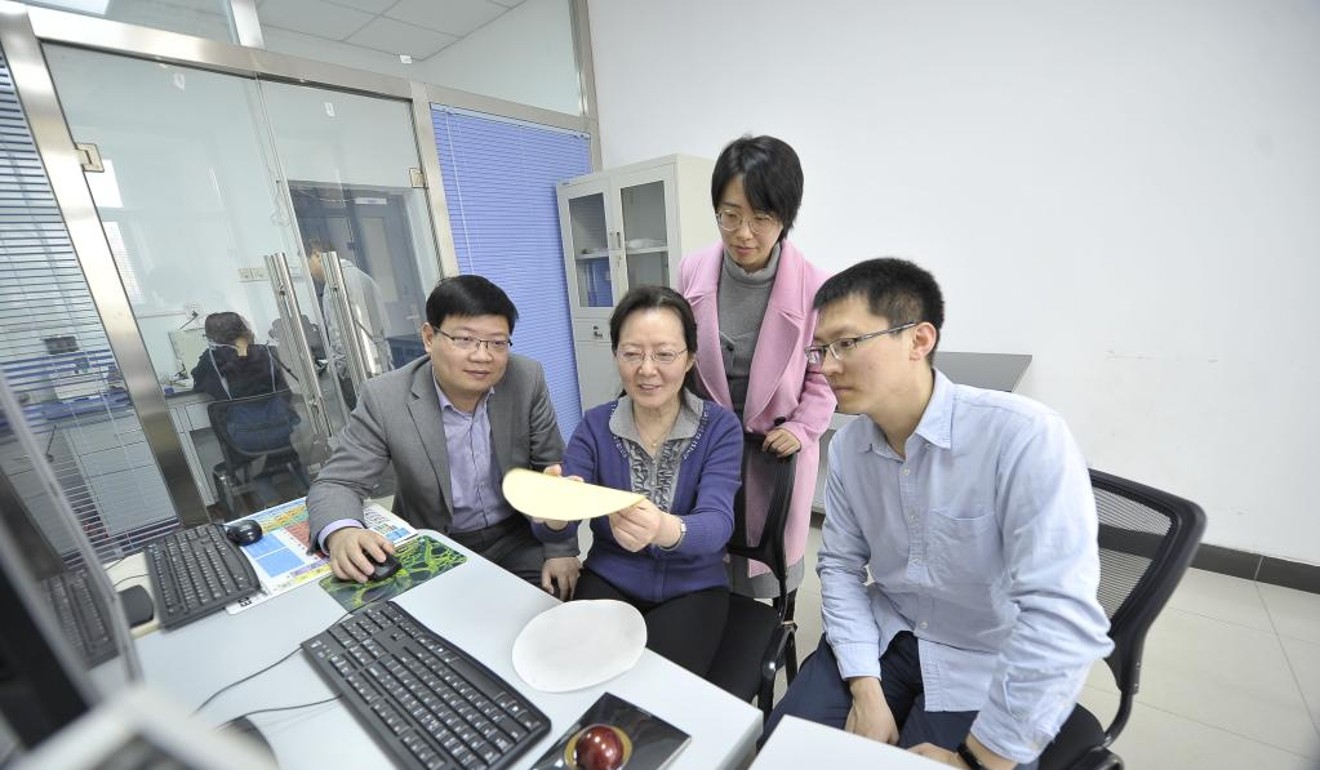
Chinese scientists turn black coal by-product into white paper
- After nearly a decade of research, fly ash could reduce amount of wood pulp used in paper production
More than 2,000 years after the invention of paper in China, the country’s scientists are claiming another breakthrough that replaces its key ingredient with the dirty waste from coal-fired power plants.
The result – which is almost indistinguishable from paper made from wood pulp – achieves a more than 90 per cent match to pure whiteness, despite being made with the black fly ash produced from burning coal.
The process has passed stringent tests in real production lines and is ready for mass application, with some Chinese paper mills now able to replace nearly half the wood fibres in their products with the chimney waste, according to scientists involved in the government-funded research programme.
The breakthrough has come nearly 10 years after Professor Zhang Meiyun, from the Shaanxi University of Science and Technology, and her colleagues first proposed that calcium silicate in fly ash could be used as a filler in paper.

The new product addresses two problems – the environmental impact of the global industrial demand for timber and how to dispose of millions of tonnes of fly ash each year.
Paper mills are responsible for more than 40 per cent of the timber felled globally for industrial use which “has devastating impacts on some of the world’s most ecologically important places and species”, according to the World Wide Fund for Nature (WWF).
Because most forests in China are protected, the country’s paper mills source wood pulp mainly from Canada, Russia, the United States and other countries endowed with vast forests. China has the world's largest paper industry, with paper and pulp production reaching nearly 100 million tonnes annually – more than all European countries combined.
The first sheets produced in our lab looked grey. We had a Cinderella but the paper industry wanted a Snow White.
China is also the world's largest electricity producer, collecting about 700 million tonnes of fly ash each year, according to government statistics. About 70 per cent of this waste – a by-product of coal combustion composed of fine particles containing various minerals such as calcium and silicon – is used by the construction industry but the remainder has had nowhere to go, until now.
To Zhang and her colleagues, the fly ash was a promising candidate as a wood pulp substitute because its chemical and physical properties were similar to industrial additives – such as talcum powder and kaolin – already used in paper production.

They soon realised it was easier said than done. “The first sheets that came out in our lab looked grey,” Dr Song Shunxi, another scientist in the programme, said. “We had a Cinderella but the paper industry wanted a Snow White. It didn’t work out very well.”

The problem was the presence in the fly ash of unburnt carbon particles which reduced the paper’s brightness. Without a cost-effective method to remove these particles, the project was stuck. Datang Power, one of the largest state-owned electricity producers in China, joined the programme with a potential solution.
Many coal beds in China contain aluminium, and the chemical process to extract aluminium from fly ash was known to have a whitening effect. At an aluminium factory next to a Datang power plant in Inner Mongolia, the scientists found a suitable fly ash and brought the sample back to their lab in Xian.
The sheet turned bright, just as they had predicted, but it was too brittle and inflexible for use. According to Song, this latest problem was caused in part by the size and shape of the fly ash particles, and it took the scientists and engineers several years to fine-tune the processing of raw fly ash to achieve the perfect grains.
“Plant fibre is organic, fly ash is not. Blending them together is difficult, and there are lots of gaps to fill between the fibres,” Song said. “Nobody wants to use paper on which the ink spreads or which has dust coming off.”
There was no simple solution to this problem, the scientists found, because improving one property of the material could easily lead to the degradation of another.
It was not until 2014 that the team found an effective formula that addressed all elements in the papermaking process – from the atomic structure of the different materials, to the amount of water added to the pulp, to the brand of adhesive chemicals added to bind the different components.
The technology worked perfectly in the laboratory but no factory wanted to try it. To use it, production lines required modification and workers and engineers needed time to learn and become familiar with the process. There was also concern that if the technology failed, a plant could miss its annual production target.
Chinese scientists recognised for water-saving irrigation technology
“Thankfully we had the government behind us,” Song said. With financial support and liaison from the authorities at numerous levels, the scientists were able to test and improve the technology over several years at paper mills in Shaanxi, Zhejiang, Henan and Shandong provinces.
The researchers did not give details of their support from the authorities, except to say most of the funding came from the central government in Beijing, with additional help from provincial and city-level governments. Feedback was positive, with production cost savings ranging from eight to 15 per cent, according to Song.
There were still some factors limiting the application of the process across the country, including the location of some paper mills far from coal-fired power plants. The greater the distance, the higher the costs of transporting the fly ash.
The quality of the coal also varied from one location to another, so the whitening and blending formula would need to be adjusted on a case-by-case basis.
“We will continue to improve the technology until one day it can be used in every paper mill,” Song said.
A senior researcher at the State Key Laboratory of Pulp and Paper Engineering in Guangzhou, in the southern province of Guangdong, said that China had solved all the major technical problems in making paper with fly ash.
Chinese papermaker’s profit sinks 51 per cent due to tariffs
Several research teams had come up with innovative solutions using different strategies, said the researcher, who asked not to be named because of his role on a national committee which reviews these technologies.
“The cost of using fly ash is only about one tenth of importing pulp,” the scientist said.
The main competitor of fly ash, however, is not wood but other inorganic fillers such as the kaolin clay from ceramic industry.
“The technology must prove itself profitable and sustainable. It must be competitive even without the support of the government,” he said.

